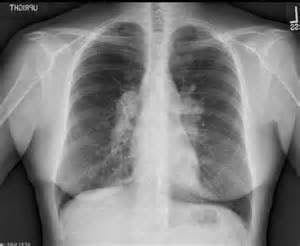For 90-95% of people living with sarcoidosis, the disease affects their lungs.
As granulomas grow throughout the organs, they may experience coughing, chest pain, shortness of breath, and sometimes even cough up blood. But for 95-99% of those with sarcoidosis, the disease isn’t fatal.

Source: http://images.radiopaedia.org
There are, however, complications that make sarcoidosis much more serious.
Increased pressure in the arteries responsible for transporting blood from the heart to the lungs known as pulmonary hypertension, is one of those complications. Because the heart ends up working harder to deliver blood to the lungs, a person with sarcoidosis and pulmonary hypertension is at an increased risk for heart failure.

Source: www.giphy.com
Those living with sarcoidosis should be on the lookout for symptoms associated with pulmonary hypertension, including persistent shortness of breath or trouble breathing.

Source: www.giphy.com
An echocardiogram can be used to screen for pulmonary hypertension, accompanied by heart catheterization to confirm.
If a person with sarcoidosis is found to also have pulmonary hypertension, they may require a lung transplant.

Source: www.giphy.com
Older patients with sarcoidosis are more likely to also develop pulmonary hypertension.
If you have more questions about pulmonary hypertension and sarcoidosis, don’t be afraid to talk with your healthcare team. Together, you CAN manage life with sarcoidosis!


